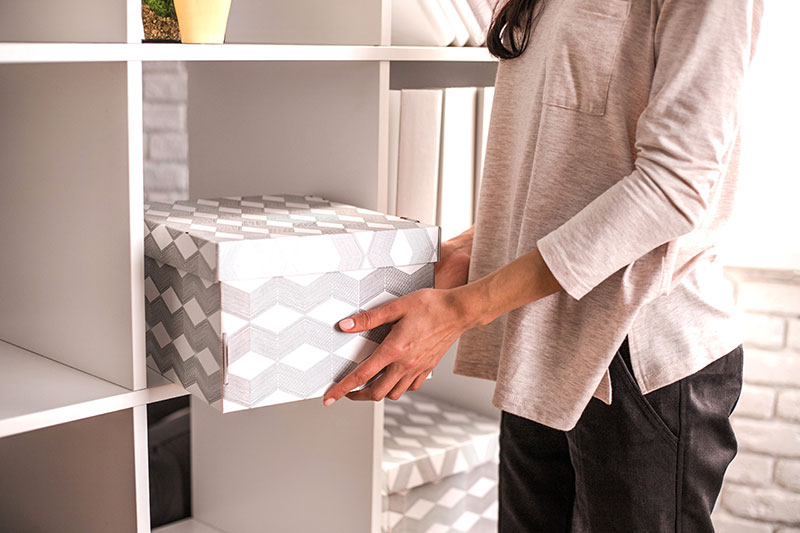
Home organization illustration
The longer you live in your home, the more mess it accumulates — and the easier it is to get overwhelmed by clutter! If you find yourself swamped with stuff or always hunting for items you can’t find, it’s time to take action.
While you will have to invest time upfront, organization pays off in the long haul. For instance, you’ll be able to find what you need when you need it; your home will look cleaner; and tidy living spaces can even help you think more clearly in day-to-day life.
When you’re ready to take control of the chaos in your home, here are some smart hacks to make the process a little less overwhelming:
1. Tackle one area at a time
You know the adage, “How do you eat an elephant? One bite at a time.” Well, that’s true of cutting clutter, too. Rather than trying to organize your entire home at once, pace yourself. Instead of burning yourself out in a marathon cleaning session, pick one room (or even one section of a room) and focus your energy on that particular place. Breaking organization into smaller chunks can give you achievable goals to check off, one by one, providing a sense of accomplishment as you
continue.
2. Minimize first
If you’re like a lot of homeowners, organizing starts with a trip to the store to purchase storage containers and other organizational supplies. Before buying a
bunch of new bins or baskets, however, you want to first minimize the number of possessions you’ll be storing. Maybe you won’t need five bins after you declutter; maybe you’ll need two. To minimize, empty everything out of an area and systematically examine each item, asking yourself what you want to keep, sell or give away. When you’re done, separate only the keepers to know how much stuff to store.
3. Group like things together
Whether you’re talking about the kitchen cabinets or a child’s dresser drawers, a basic principle of organization is to group similar items together. Of the possessions you know you’re keeping, create categories. This should give you an idea of what kind of storage space each grouping will need.
4. Arrange items by frequency of use
Anything that you use frequently — daily or several times a week, for example — needs to be easy to grab. Keep these items at the fronts of drawers, cabinets or display cases. Items that you use rarely or for special occasions, such as a specialty kitchen appliance you pull out for the holidays or seasonal décor you rotate throughout the year, can go into the harder-to-reach areas.
5. Look for wasted space
If you’re at a loss for extra space, don’t miss these often-overlooked areas: under the bed, over doors or on a wall. Bins kept under the bed can be great for storing out-of-season clothing. Floating shelves can turn an empty wall into smart vertical storage. If you have open floor space, you could also consider another piece of furniture or a rolling cart that adds stylish storage to your home.
Make your storage see-through when possible. Transparent organizers make it possible to visually scan a storage area and know what you have, without having to open each individual bin. In some cases, see-through storage also adds decorative appeal: Think of clear jars for dry goods in the kitchen.
Create landing areas. Once you’ve established some order in a space, be proactive about maintaining it. Just as you give guests a place to hang coats and set shoes when they enter your home, so too do you need a landing place for keys, mail, receipts and other items that are common in your routines. This ensures that you’ll be able to get organized and stay organized as you move forward.
Home organization takes effort, but it is doable — especially if you think strategically about how and where you group your goods. Use the tips above to get started and have fun! The rewards of good organization can make all your effort worthwhile.
AUTHOR BIO: Tom Happ is President of Closet Works — based in Elmhurst, Illinois — which for 32 years has served Chicagoland with customized closet and storage solutions. With more than 100 employees, each solution is designed, fabricated and Installed to optimize the storage for every room within the home.